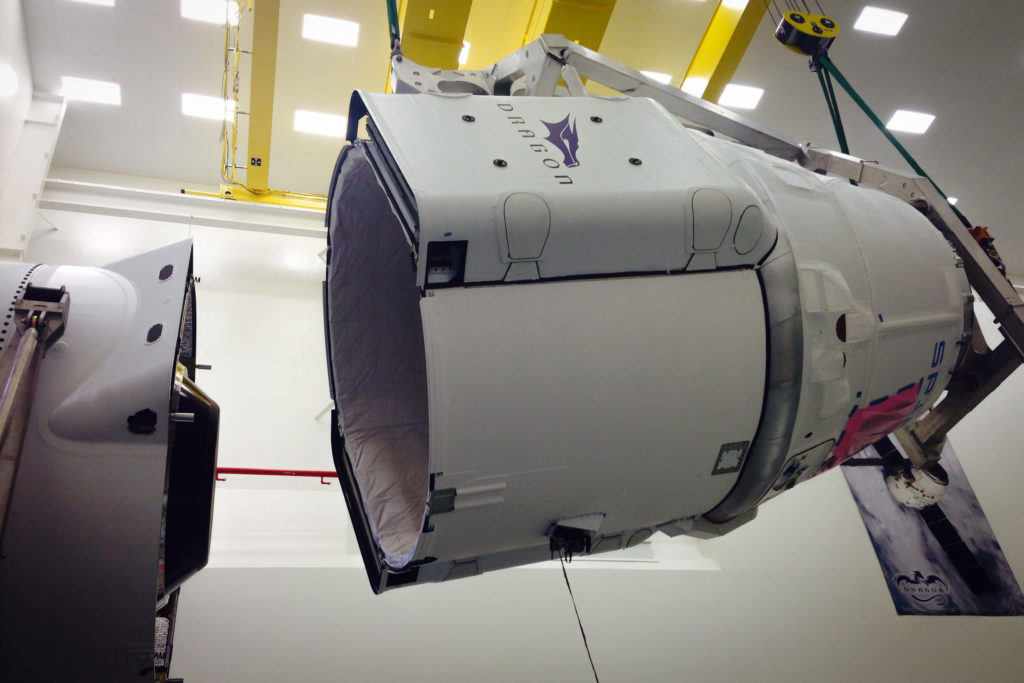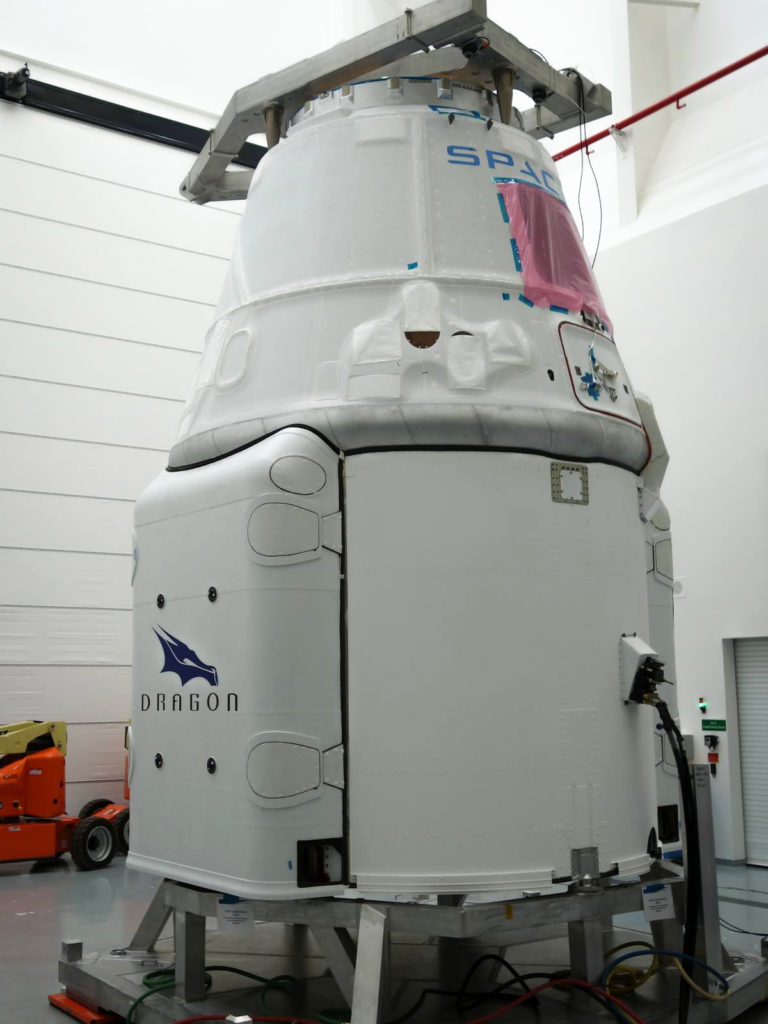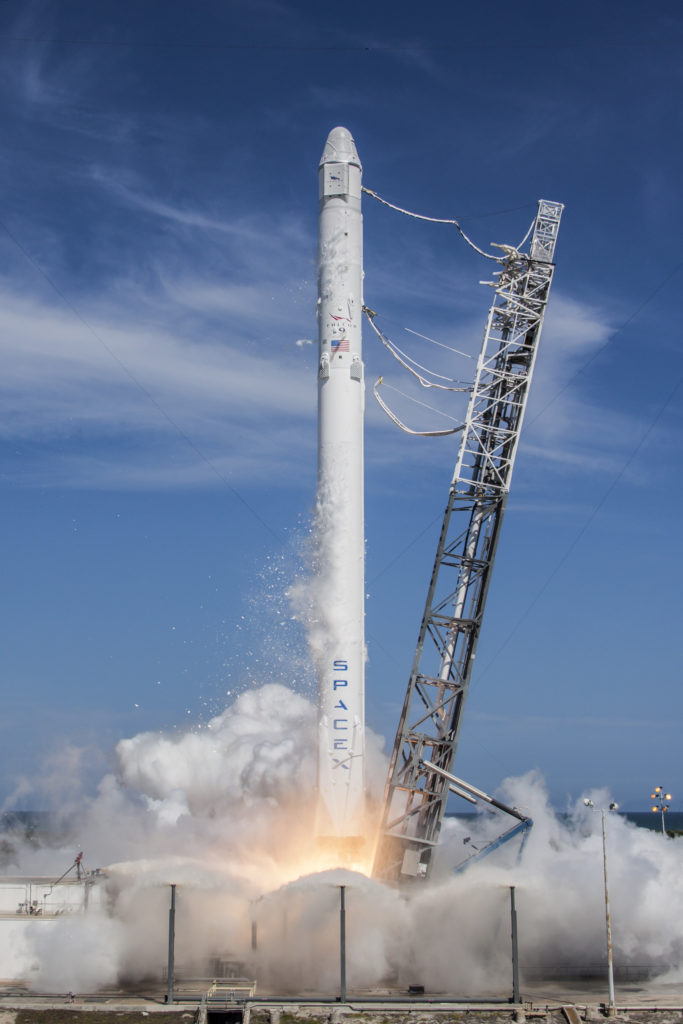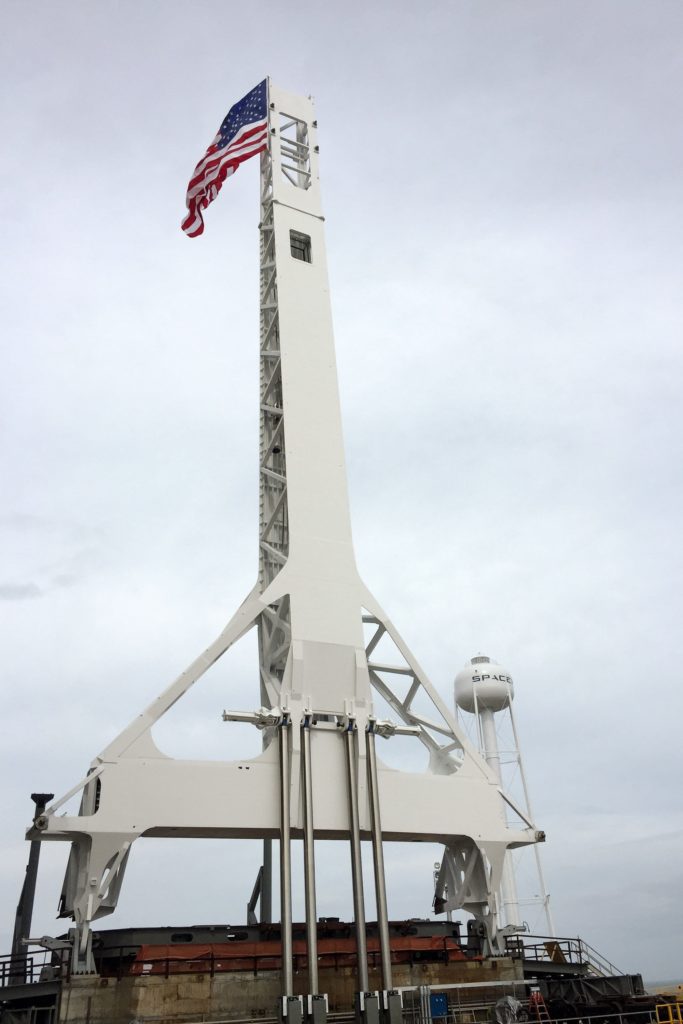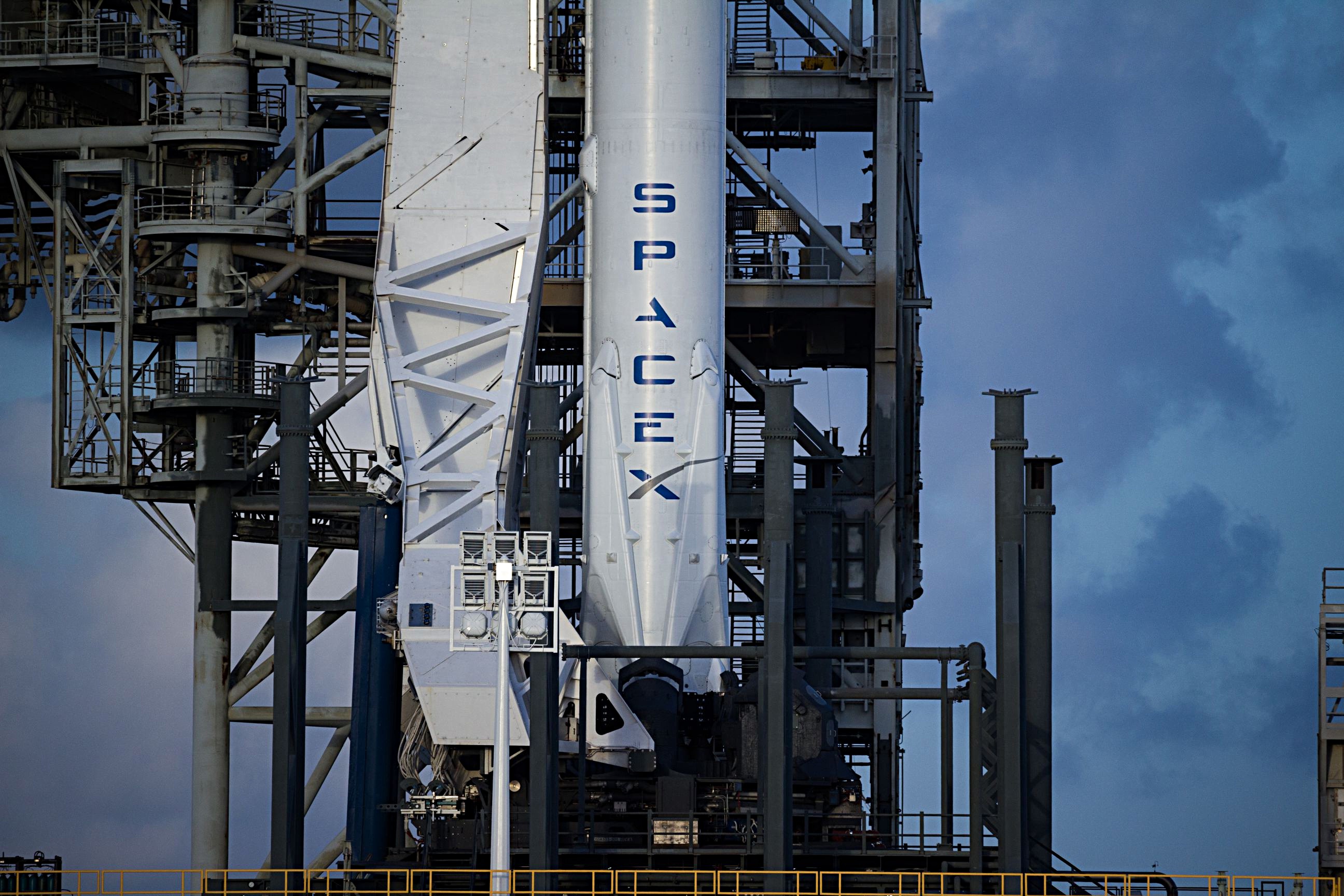

News
SpaceX prepares for space station supply mission as secret Zuma launch postponed
Zuma patiently awaits a new launch date
Just shy of two weeks ago, SpaceX announced the discovery of unspecified problems with a Falcon 9 payload fairing during routine quality assurance (QA) testing at the company’s Hawthorne, CA factory. The launch of Zuma, a deeply mysterious satellite with no clear manufacturer or customer, was subsequently delayed indefinitely, pending the results of an internal investigation into the aforementioned fairing defects.
Several days after SpaceX’s Zuma announcement, the Falcon 9 booster, second stage, and payload (often referred to as the “stack”) were rolled back into the pad facilities at LC-39A, verifying that a delay of at least several days would follow. This delay was both confirmed and denied in a confusing manner, with the Cape’s 45th Space Wing appearing to suggest that Zuma would not be impacted by a preplanned range closure in late November, although journalist Irene Klotz reported that Zuma was delayed until December, when maintenance was scheduled to end.

SpaceX’s mysterious Zuma payload and Falcon 9 1043 seen before stormy Florida skies. (Tom Cross/Teslarati)
All things considered, the month of November has been an unusually chaotic period for SpaceX and the Space Coast, and the chaos has almost certainly been exacerbated by the intense secrecy surrounding Zuma. As the sum total of publicly available information, these details indicate that SpaceX employees discovered a systemic defect or defects in recently-manufactured fairings, serious enough to indefinitely ground the company’s commercial launches. However, SpaceX recently opened press registration for the Iridium-4 mission, still apparently scheduled for launch on December 22 and further corroborated by the CEO of Iridium Communications, hinting that that mission’s fairing either predates the scope of the fairing investigation, or that the investigation and fairing groundings have arisen out of an abundance of caution above all else.
A Dragon stretches its wings
More importantly and perhaps more logically, SpaceX’s next Cargo Dragon mission to the International Space Station – CRS-13 – has not been directly impacted by fairing problems; Dragon missions do not require fairings. The CRS-13 mission, currently aiming for a static fire on November 29 and launch on December 4, will be exceptional for a number of equally thrilling reasons. In no particular order: CRS-13 will mark the first NASA-approved reuse of a Falcon 9’s first stage, in this case with the added aesthetic bonus that the Dragon will reach orbit aboard the same booster that launched CRS-11’s Dragon almost exactly six months prior, June 3 2017. Equally exciting, CRS-12 marked the final new Cargo Dragon launch, and CRS-13’s Dragon is a refurbished spacecraft, having previously flown the CRS-6 mission in late 2015.
- The CRS-6 Cargo Dragon being mated to its Falcon 9 launch vehicle in 2015. (SpaceX)
- This exact Dragon has been recovered from orbit, refurbished, and is now prepped and ready for another orbital mission on December 4th. (SpaceX)
Rather poetically, CRS-11 marked the first commercial reuse of an orbital spacecraft, and the booster that launched that mission, Falcon 9 1035, will now fly once more to lift the second-ever reused Dragon into orbit. If all goes as planned, SpaceX’s CRS-13 mission will arguably be the most-reused orbital-class mission in the history of spaceflight, with only the second stage and Dragon’s trunk being both new and expendable. Both the booster and Dragon likely required a fair amount of refurbishment, but if Elon Musk’s June 2017 statements remain accurate, SpaceX has probably progressed far along the reusability learning curve. Quoting Elon Musk and myself at the ISS R&D Conference in July 2017:
Musk said he expects the next Dragon reuse and all future reuses to save the SpaceX nearly 50% of the cost of manufacturing an entirely new spacecraft. Musk admitted that the first refurbishment of Dragon likely ended up costing as much or more than a new vehicle, but this is to be expected for the first attempt to reuse any sort of space hardware that must survive some form of reentry heating and saltwater immersion.
Indeed, CRS-13 will in fact be “the next Dragon reuse” after CRS-11’s success. If the spacecraft’s refurbishment does manage save SpaceX anywhere near 50% of the cost of manufacture, the mission will be an extraordinary accomplishment, above and beyond the already intense difficulty of refurbishing and reflying a several-ton (~4000kg empty) orbital spacecraft.
LC-40 pad repairs near completion
Even after the reuse of both the Dragon and Falcon 9 booster, CRS-13 will lay host to yet another milestone for SpaceX as the first mission to launch from the newly repaired Launch Complex-40 (LC-40), after the pad suffered widespread damage from a Falcon 9 failure during preparations for the launch of Amos-6. Little is known on the specifics of the damage suffered, but repairs have taken no less than 14 months and at a minimum required the fabrication, assembly, and qualification of entirely new Ground Support Equipment (GSE).
- Based on photos posted to social media, LC-40’s new TEL will be considerably different than the 39A’s white monolith, likely closer in form to the original it is to replace (seen here). (SpaceX)
- The TEL seen at LC-39A in early 2017. (SpaceX)
- LC-39A’s TEL and Falcon 9 seen before the launch of SES-11 in October 2017. (Tom Cross/Teslarati)
Under the umbrella of GSE are thousands of feet of precisely machined and welded piping and pumps, a new launch mount and transporter-erector-launcher (TEL) to carry Falcon 9 out of the integration facilities, the repair or complete removal and replacement of a huge volume of scalded concrete, and the repair or replacement of likely dozens or hundreds of other miscellaneous components destroyed in the intense fire that followed the Amos-6 incident. Nevertheless, as spotted on a social media platform by the author, the aforementioned TEL and launch mount were shown going vertical just a handful of days ago, further evidence that LC-40 is once again rapidly marching towards operational status.
The long-awaited reactivation and return to operations at LC-40 is itself arguably the most critical path ahead of Falcon Heavy’s inaugural launch, and modifications to the pad and TEL have restarted in light of Zuma’s indefinite delays, with SpaceX’s ever-productive and heroic ground crew taking advantage of extra down-time between launches. With Zuma now ~11 days past its scheduled launch date, the mission’s delay will likely result in additional delays to Falcon Heavy’s inaugural launch, which was reported to be aiming for ~December 29. This deep of a delay might also necessitate the transfer of Zuma’s launch from LC-39A to LC-40, depending on the customer’s flexibility and SpaceX’s own needs. Time will tell, and in the meantime, the mystery of Zuma and wondrous accomplishments of CRS-13 ought to sate the launch withdrawals of SpaceX fans for the time being.
News
Tesla China breaks 8-month slump by selling 71,599 vehicles wholesale in June
Tesla China’s June numbers were released by the China Passenger Car Association (CPCA) on Tuesday.

Tesla China was able to sell 71,599 vehicles wholesale in June 2025, reversing eight consecutive months of year-over-year declines. The figure marks a 0.83% increase from the 71,599 vehicles sold wholesale in June 2024 and a 16.1% jump compared to the 61,662 vehicles sold wholesale in May.
Tesla China’s June numbers were released by the China Passenger Car Association (CPCA) on Tuesday.
Tesla China’s June results in focus
Tesla produces both the Model 3 and Model Y at its Shanghai Gigafactory, which serves as the company’s primary vehicle export hub. Earlier this year, Tesla initiated a changeover for its best-selling vehicle, the Model Y, resulting in a drop in vehicle sales during the first and second quarters.
Tesla’s second-quarter China sales totaled 191,720 units including exports. While these numbers represent a 6.8% year-over-year decline for Tesla China, Q2 did show sequential improvement, rising about 11% from Q1 2025, as noted in a CNEV Post report.
For the first half of the year, Tesla sold 364,474 vehicles wholesale. This represents a 14.6% drop compared to the 426,623 units sold wholesale in the first half of 2024.
China’s competitive local EV market
Tesla’s position in China is notable, especially as the new Model Y is gaining ground in the country’s BEV segment. That being said, Tesla is also facing competition from impressive local brands such as Xiaomi, whose new YU7 electric SUV is larger and more affordable than the Model Y.
The momentum of the YU7 is impressive, as the vehicle was able to secure 200,000 firm orders within three minutes and over 240,000 locked-in orders within 18 hours. Xiaomi’s previous model, the SU7 electric sedan, which is aimed at the Tesla Model 3, also remains popular, with June deliveries surpassing 25,000 units for the ninth straight month.
While China’s EV market is getting more competitive, Tesla’s new Model Y is also ramping its production and deliveries. Needless to say, Tesla China’s results for the remaining two quarters of 2025 will be very interesting.
Elon Musk
Tesla reveals it is using AI to make factories more sustainable: here’s how
Tesla is using AI in its Gigafactory Nevada factory to improve HVAC efficiency.

Tesla has revealed in its Extended Impact Report for 2024 that it is using Artificial Intelligence (AI) to enable its factories to be more sustainable. One example it used was its achievement of managing “the majority of the HVAC infrastructure at Gigafactory Nevada is now AI-controlled” last year.
In a commitment to becoming more efficient and making its production as eco-friendly as possible, Tesla has been working for years to find solutions to reduce energy consumption in its factories.
For example, in 2023, Tesla implemented optimization controls in the plastics and paint shops located at Gigafactory Texas, which increased the efficiency of natural gas consumption. Tesla plans to phase out natural gas use across its factories eventually, but for now, it prioritizes work to reduce emissions from that energy source specifically.
It also uses Hygrometric Control Logic for Air Handling Units at Giafactory Berlin, resulting in 17,000 MWh in energy savings each year. At Gigafactory Nevada, Tesla saves 9.5 GWh of energy through the use of N-Methylpyrrolidone refineries when extracting critical raw material.
Perhaps the most interesting way Tesla is conserving energy is through the use of AI at Gigafactory Nevada, as it describes its use of AI to reduce energy demand:
“In 2023, AI Control for HVAC was expanded from Nevada and Texas to now include our Berlin-Brandenburg and Fremont factories. AI Control policy enables HVAC systems within each factory to work together to process sensor data, model factory dynamics, and apply control actions that safely minimize the energy required to support production. In 2024, this system achieved two milestones: the majority of HVAC infrastructure at Gigafactory Nevada is now AI-controlled, reducing fan and thermal energy demand; and the AI algorithm was extended to manage entire chiller plants, creating a closed-loop control system that optimizes both chilled water consumption and the energy required for its generation, all while maintaining factory conditions.”
Tesla utilizes AI Control “primarily on systems that heat or cool critical factory production spaces and equipment.” AI Control communicates with the preexisting standard control logic of each system, and any issues can be resolved by quickly reverting back to standard control. There were none in 2024.
Tesla says that it is utilizing AI to drive impact at its factories, and it has proven to be a valuable tool in reducing energy consumption at one of its facilities.
Elon Musk
Tesla analysts believe Musk and Trump feud will pass
Tesla CEO Elon Musk and U.S. President Donald Trump’s feud shall pass, several bulls say.

Tesla analysts are breaking down the current feud between CEO Elon Musk and U.S. President Donald Trump, as the two continue to disagree on the “Big Beautiful Bill” and its impact on the country’s national debt.
Musk, who headed the Department of Government Efficiency (DOGE) under the Trump Administration, left his post in May. Soon thereafter, he and President Trump entered a very public and verbal disagreement, where things turned sour. They reconciled to an extent, and things seemed to be in the past.
However, the second disagreement between the two started on Monday, as Musk continued to push back on the “Big Beautiful Bill” that the Trump administration is attempting to sign into law. It would, by Musk’s estimation, increase spending and reverse the work DOGE did to trim the deficit.
Every member of Congress who campaigned on reducing government spending and then immediately voted for the biggest debt increase in history should hang their head in shame!
And they will lose their primary next year if it is the last thing I do on this Earth.
— Elon Musk (@elonmusk) June 30, 2025
President Trump has hinted that DOGE could be “the monster” that “eats Elon,” threatening to end the subsidies that SpaceX and Tesla receive. Musk has not been opposed to ending government subsidies for companies, including his own, as long as they are all abolished.
How Tesla could benefit from the ‘Big Beautiful Bill’ that axes EV subsidies
Despite this contentious back-and-forth between the two, analysts are sharing their opinions now, and a few of the more bullish Tesla observers are convinced that this feud will pass, Trump and Musk will resolve their differences as they have before, and things will return to normal.
ARK Invest’s Cathie Wood said this morning that the feud between Musk and Trump is another example of “this too shall pass:”
BREAKING: CATHIE WOOD SAYS — ELON AND TRUMP FEUD “WILL PASS” 👀 $TSLA
She remains bullish ! pic.twitter.com/w5rW2gfCkx
— TheSonOfWalkley (@TheSonOfWalkley) July 1, 2025
Additionally, Wedbush’s Dan Ives, in a note to investors this morning, said that the situation “will settle:”
“We believe this situation will settle and at the end of the day Musk needs Trump and Trump needs Musk given the AI Arms Race going on between the US and China. The jabs between Musk and Trump will continue as the Budget rolls through Congress but Tesla investors want Musk to focus on driving Tesla and stop this political angle…which has turned into a life of its own in a roller coaster ride since the November elections.”
Tesla shares are down about 5 percent at 3:10 p.m. on the East Coast.
-

 Elon Musk2 days ago
Elon Musk2 days agoTesla investors will be shocked by Jim Cramer’s latest assessment
-

 News7 days ago
News7 days agoTesla Robotaxi’s biggest challenge seems to be this one thing
-

 News2 weeks ago
News2 weeks agoTesla’s Grok integration will be more realistic with this cool feature
-

 Elon Musk2 weeks ago
Elon Musk2 weeks agoElon Musk slams Bloomberg’s shocking xAI cash burn claims
-

 News2 weeks ago
News2 weeks agoTesla China roars back with highest vehicle registrations this Q2 so far
-

 News2 weeks ago
News2 weeks agoTexas lawmakers urge Tesla to delay Austin robotaxi launch to September
-

 News2 weeks ago
News2 weeks agoTesla dominates Cars.com’s Made in America Index with clean sweep
-

 Elon Musk1 week ago
Elon Musk1 week agoFirst Look at Tesla’s Robotaxi App: features, design, and more

